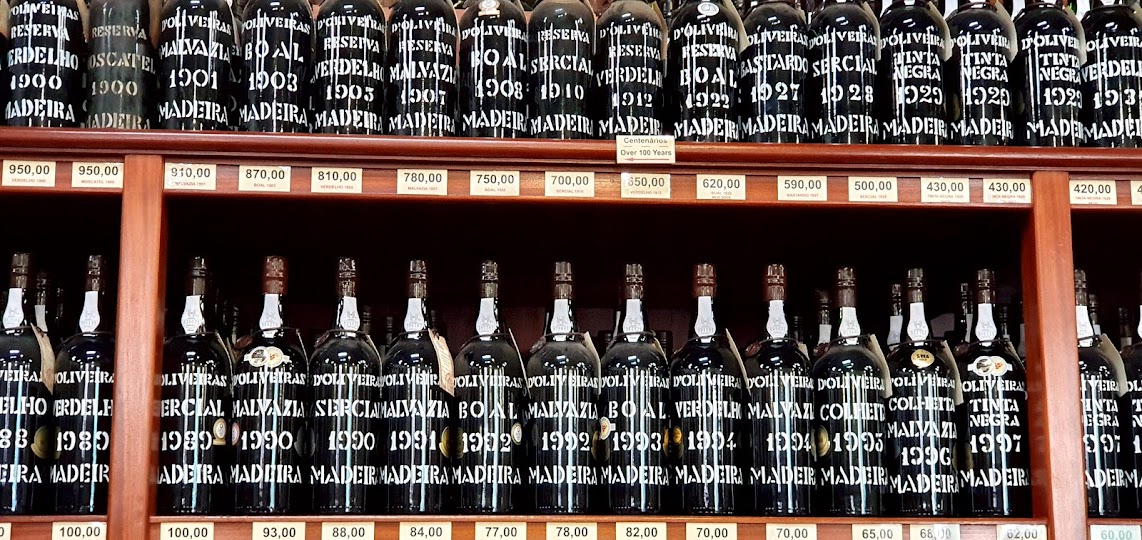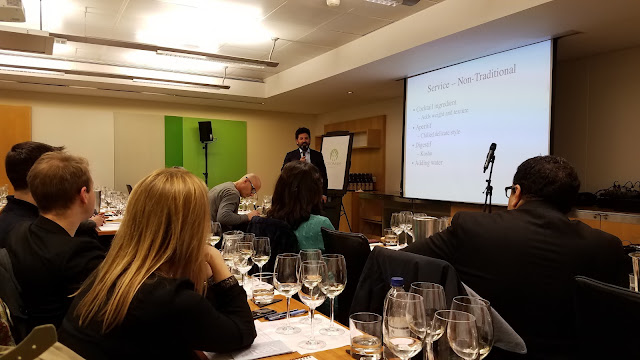Isa Bal is a friendly Turkish expert of sake. Here is some points from my notes of his masterclass.
Sake imports increases 20pc in last 5 years in the UK, no longer esoteric, western consumers know more.
Three old misconception gone:
1. No longer drink only with Japanese food,
2. people understand it is not distilled but fermented and
3. it is not necessary to drink it warm. Now easier to sell sake in Europe.
Junmai-shu (rice only; no adding of distilled alcohol)
Honjozo-shu (little distilled alcohol is added)
Ginjo-shu (highly polished rice, with or without alcohol added)
Daiginjo-shu (even more highly polished rice, with/without added alcohol)
Koshu (aged sake, only a small % of production)
COMPONENTS
rice, different kinds, main by far is the Yamada Nishiki
water, main component to characterize "terroir"
kojo (fungus transform rice's starch in fermentable sugar)
yeast (ferments sugar into alcohol, carefully selected, never indigenous)
PROCESS
Polishing: want to keep only core of rice. 70% polish to remove fat and proteins means only 30% of rice grain is left to ferment.
Parallel fermentation, yeast and Kojo work simultaneously very complex to master by brewery
Serving temperature can be anything between 5 to 55 degrees Celsius.
Depend on personal taste but also season. Best sake should not be heated too much or lose aroma.
Traditionally served in square wooden boxes or porcelain cups but depends on style of location, glass ok in modern setting. Not so fussy like in wine about shape and size of vessel.
Alcohol content significant, about 15pc but not more than a strong wine.
Can make sake anywhere and call it sake but not "Nihon shu" which is literally "Japanese sake".
Can keep open bottle for a week or more and oxidation is very slow.
TASTING
Today's tasting included 10 sakes, 9 newly bottled and 1 aged from 1992. After initial tasting we matched with beef meat balls in tomato sauce, Parmigiano, artichoke in olive oil and goose liver paté.
Meat balls difficult match.
Artichoke easiest, best pair with all sakes good match also in relative terms because virtually no wine will do, best with fruitier fresher sakes from north of Japan
Parmigiano and goose liver paté more flexible and can be matched with different sakes, especially the more full bodied ones from the south
about 50 Sommeliers at tasting, we came up with wildly different opinions on paring, because it's new and different for most of us but lots of fun trying! need to be adventurous and brave!
A lady who works to promote sake in Europe, I think at Japanese chamber of commerce, said that sake is like Japanese people : easygoing, don't like fighting (sic) prefer to go smoothly together. Sake is therefore a forgiving generous drink that will adapt to lots of different kinds of food.
She also said that sake is like the Japanese who adopt the Buddhist view to enjoy the present without thinking too much about the future so sake is made to drink soon, no aging. I asked why we tasted today an aged sake (vintage 1992) which in my opinion was the best of the 10 we tasted, complex sweet but toasted, ok with torta della nonna, apple pie, even grilled meat with caramelized sauce like pork chops. She said that one can age some sakes and the result can appeal to Europe taste because Europeans are used to aging wine, tertiary flavors.
Sake can last longer when you open bottle, oxidation slower, she said she keeps open bottle in fridge for over a week (which means she must be a lonely drinker in the evening...)
Water essential, Japan gets lots of rain, no problem for now, yet even now use deep sea water with low salinity.
Terroir not as important as in wine, most important the hand that makes it. Can transport rice and yeast across the country. Water only local ingredient. not so important good year and bad year as in wine vintages because the ingredients do not change appreciably from one year to the next.
North Japan sake is usually more crisp and dry, in the south rich and sometimes a bit sweet, both go with local food.
At the end of the tasting a reporter for a Japanese radio interviewed me and asked if I thought it might be possible to make good sake in Europe. Some are trying, including in the UK. I said I did not know if it would be as good but it would probably be different unless the European brewers import all ingredients from Japan, like the Japanese do when they make whisky, with excellent results. Water however would be more difficult to import so the end product will be different.
Junmai-shu (rice only; no adding of distilled alcohol)
Honjozo-shu (little distilled alcohol is added)
Ginjo-shu (highly polished rice, with or without alcohol added)
Daiginjo-shu (even more highly polished rice, with/without added alcohol)
Koshu (aged sake, only a small % of production)
COMPONENTS
rice, different kinds, main by far is the Yamada Nishiki
water, main component to characterize "terroir"
kojo (fungus transform rice's starch in fermentable sugar)
yeast (ferments sugar into alcohol, carefully selected, never indigenous)
PROCESS
Polishing: want to keep only core of rice. 70% polish to remove fat and proteins means only 30% of rice grain is left to ferment.
Parallel fermentation, yeast and Kojo work simultaneously very complex to master by brewery
Serving temperature can be anything between 5 to 55 degrees Celsius.
Depend on personal taste but also season. Best sake should not be heated too much or lose aroma.
Traditionally served in square wooden boxes or porcelain cups but depends on style of location, glass ok in modern setting. Not so fussy like in wine about shape and size of vessel.
Alcohol content significant, about 15pc but not more than a strong wine.
Can make sake anywhere and call it sake but not "Nihon shu" which is literally "Japanese sake".
Can keep open bottle for a week or more and oxidation is very slow.
TASTING
Today's tasting included 10 sakes, 9 newly bottled and 1 aged from 1992. After initial tasting we matched with beef meat balls in tomato sauce, Parmigiano, artichoke in olive oil and goose liver paté.
Meat balls difficult match.
Artichoke easiest, best pair with all sakes good match also in relative terms because virtually no wine will do, best with fruitier fresher sakes from north of Japan
Parmigiano and goose liver paté more flexible and can be matched with different sakes, especially the more full bodied ones from the south
about 50 Sommeliers at tasting, we came up with wildly different opinions on paring, because it's new and different for most of us but lots of fun trying! need to be adventurous and brave!
A lady who works to promote sake in Europe, I think at Japanese chamber of commerce, said that sake is like Japanese people : easygoing, don't like fighting (sic) prefer to go smoothly together. Sake is therefore a forgiving generous drink that will adapt to lots of different kinds of food.
She also said that sake is like the Japanese who adopt the Buddhist view to enjoy the present without thinking too much about the future so sake is made to drink soon, no aging. I asked why we tasted today an aged sake (vintage 1992) which in my opinion was the best of the 10 we tasted, complex sweet but toasted, ok with torta della nonna, apple pie, even grilled meat with caramelized sauce like pork chops. She said that one can age some sakes and the result can appeal to Europe taste because Europeans are used to aging wine, tertiary flavors.
Sake can last longer when you open bottle, oxidation slower, she said she keeps open bottle in fridge for over a week (which means she must be a lonely drinker in the evening...)
Water essential, Japan gets lots of rain, no problem for now, yet even now use deep sea water with low salinity.
Terroir not as important as in wine, most important the hand that makes it. Can transport rice and yeast across the country. Water only local ingredient. not so important good year and bad year as in wine vintages because the ingredients do not change appreciably from one year to the next.
North Japan sake is usually more crisp and dry, in the south rich and sometimes a bit sweet, both go with local food.
At the end of the tasting a reporter for a Japanese radio interviewed me and asked if I thought it might be possible to make good sake in Europe. Some are trying, including in the UK. I said I did not know if it would be as good but it would probably be different unless the European brewers import all ingredients from Japan, like the Japanese do when they make whisky, with excellent results. Water however would be more difficult to import so the end product will be different.

